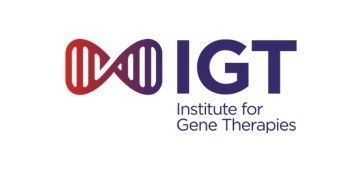Gene Replacement Therapy in the Barth syndrome Knockout Mouse
Friday June 26, 2020
Dr. Bill Pu & Dr. Suya Wang
Boston Children’s Hospital/Harvard Medical School
For many years, Barth syndrome mouse research has been driven by a knockdown model in which the amount of Tafazzin (TAZ) is literally diminished in a mouse. The Tafazzin Knockout Mouse (KO) is available via Doug Strathdee, Beatson Institute. Two articles have discussed the Tafazzin KO mouse, the first by Doug Strathdee et al (2015) describes the meiotic challenges in generating the model. The second by Bill Pu et al (2020) characterizes the model and assesses the impact of AAV-TAZ gene replacement therapy as it relates to Barth syndrome etiology.
Additional information on the animal cellular models of Barth syndrome may be found here.
The following is a summary of a discussion with Dr. Bill Pu and Dr. Suya Wang during the BSF Virtual Roundtable on June 26, 2020.
Dr. Bill Pu is a pediatric cardiologist at Boston Children’s Hospital and Harvard Medical School who focuses on basic and translational research to understand heart development and disease, and to develop new disease treatments. One tool used in the Pu lab is induced pluripotent stem cell (iPS) technology to understand how gene mutations cause inherited forms of heart disease. By reprogramming skin or blood cells from patients with heart disease, Dr. Pu’s lab creates stem cells (“iPS cells”) which then can be used to create heart muscle cells that contain the patient’s disease causing mutation. This way, researchers can disease mutations within human heart muscle cells, to understand how they cause disease and to develop new treatments. BSF supported his application of this technology to Barth syndrome, leading to a ground breaking publication in Nature Medicine in 2014. These cells have been shared with other scientists across the globe. The lab continues to look to develop new treatments for Barth syndrome. Most recently, the lab published a manuscript describing the use of gene therapy in the TAZ knockout mouse to prevent and even reverse heart disease caused by TAZ mutation.
Dr. Suya Wang is a postdoctoral researcher in Dr. Pu’s laboratory at Boston Children’s Hospital. As an undergrad, she majored in Pharmacology at China Pharmaceutical University and was fascinated by how therapeutic agents change people’s life. Dr. Wang later earned her PhD in Pharmacology and Toxicology from University of Kansas, where she started her journey exploring cardiac diseases. As a pharmacologist and biologist, Dr. Wang is interested in developing and optimizing novel therapeutic approaches to genetic disorders. To her, biomedicine should not be just a research paper but a product that is safe, translatable and achievable in clinical practice.
How does the Barth KO mouse replicate Barth syndrome in affected individuals?
There are several ways in which the Barth mouse closely resembles human patients.
- Barth mice frequently die in the perinatal period or as a fetus. In humans, Barth syndrome is associated with high rate of infant mortality, although this has improved as clinical understanding and recognition of the disease has increased.
- Similar to people with Barth syndrome, the Barth mice that survive have a weaker heart as compared to wild-type (normal control) mice, especially as they age. In addition, the Barth mice develop scarring and thickening of the wall of the heart, dilation of the heart ventricles and decreased heart motility. Cardiomyopathy with these characteristics is also observed in many individuals with Barth syndrome.
- Barth KO mice demonstrate skeletal muscle weakness and fatigue with exercise as do people with Barth syndrome. Like Barth patients, Barth mice have reduced endurance, as measured by time that the mice are able to run on a treadmill.
- Neutropenia is a cardinal characteristic of Barth syndrome. The Barth mouse has lower neutrophil counts than their normal siblings, and the neutrophils are more prone to death. This area is being researched further.
- The Barth mouse is smaller in size at birth and remains smaller than normal mice throughout mice. Human infants and children with Barth syndrome are likewise smaller than their peers. However, unlike the Barth mice, some people with Barth syndrome actually grow taller than their peers due to a longer growth phase.
The organism-level similarities above are also reflected by similarities at the cellular and molecular levels. Barth mice have the characteristic abnormalities of cardiolipin than are diagnostic of Barth syndrome in humans. Mitochondria in the Barth mice look different, especially when viewed under electron microscopy. Mitochondria are present in large numbers within every cell except red blood cells. The mitochondria in the Barth mouse are very small and are structurally abnormal as compared to those observed in control mice.
What happens to the Barth mouse when “treated” with gene therapy?
Dr. Pu, Dr. Wang, and colleagues have worked to expand the early gene therapy pioneering work by Dr. Barry Byrne in the Barth knockout mouse model. The 2020 publication by Dr. Pu, Dr. Wang, and their colleagues not only characterized the Barth knockout mouse but also examine how the model responds to gene therapy. (Circ Res. 2020 Apr 10;126(8):1024-1039. doi: 10.1161/CIRCRESAHA.119.315956. Epub 2020 Mar 9.)
In the circumstance of gene therapy for Barth syndrome, a functional tafazzin gene would be added to many of the cells of the body in order to "replace” the native dysfunctional tafazzin gene. The gene is added using a vector, such as a common, non-disease causing human virus called adeno-associated virus (AAV) that has been engineered to deliver a functional tafazzin gene to heart and skeletal muscle cells.
From this research, the speakers and their team have established several key insights and also identified important variables for consideration if gene therapy were to be further developed to treat humans with Barth syndrome.
- A reduction of tafazzin as well as total absence of the gene can be completely corrected by gene therapy in the Barth mouse model.
- Heart disease can be reversed to normal function, even in those with established heart dysfunction.
- The dose of the gene therapy is critical in order to provide sustained benefit. In other words, the vector must target and penetrate enough cells in order to sustain a beneficial effect. In mice, it is feasible to deliver enough virus to transduce nearly all heart muscle cells. Humans are 2000 times larger, and also have been observed in gene therapy for other diseases to sometimes develop an immune response to very large virus doses, which puts a safety limit on the maximal dose. As a result, achieving gene replacement in a high enough fraction of muscle cells is a key challenge for human gene therapy. Ongoing studies by multiple groups are being undertaken to address this challenge.
While no adverse effects of the TAZ gene therapy were observed in mice, it will be important to establish the safety of the therapy in larger animals. This will be the next step, prior to any clinical trials in humans.
How can gene therapy in the Barth KO mouse translate to humans?
Key research questions based on the knockout mouse model help determine future research priorities and outline the next steps in bringing gene therapy to people with Barth syndrome.
Duration and dose: Optimal positive effect was seen for up to four months (the duration of the experiment) in the mice that received the highest doses of the vector. Those that were treated with a lower dose began to decline by the four-month period.
Impact on cardinal symptoms: Gene therapy is not likely to affect neutropenia in people with Barth syndrome since neutrophils are made by bone marrow cells, which are not stably transduced by the AAV. The major targets of gene therapy, and symptoms most likely to be improved, are skeletal muscle weakness and heart disease (cardiac muscle impairments).
What are some other ways that the Barth KO mouse can improve our understanding of Barth syndrome and help to develop new treatments?
Model for therapeutic testing: The Barth mouse model is an important resource that will be used to test potential new treatments. It has important experimental advantages compared to prior models, and it more closely mimics the human disease.
Genetics: In people with Barth syndrome a spectrum of severity exists ranging from mild fatigue to total heart failure and need for heart transplant. This spectrum is difficult to describe and causation is even more difficult to understand. When the mutation of the TAZ gene is put into mice with different genetic backgrounds and controlled for by identical environment in the laboratory, it appears that genetics play a strong role on the outcome of the mice. Future research may help to better understand and identify the genes that cause this spectrum and thereby help provide clues to improve the lives of patients.
Conclusion
Both the Byrne and Pu labs offer important proof of concept that gene therapy does work and therefore is a viable concept for treating Barth syndrome. Further, this research has helped to identify key variables that must be further explored including dose of the AAV, methods to safely provide a high enough dose in humans, and potential thresholds for toxicity (inflammation, immune response, and other negative effects). Large animal disease models in Barth syndrome do not exist; however, large animal studies are required to evaluate potential toxicity and to establish the therapeutic dose range that would be tested in humans. In addition, large animal model studies (pig, non-human primate) can help specify how the AAV is distributed in order to predict impact on various organ systems and correlating symptoms. It is most likely that the indications for gene therapy in Barth syndrome in the future would be the signs and symptoms of fatigue and weakness, both in skeletal muscle and in the heart.













